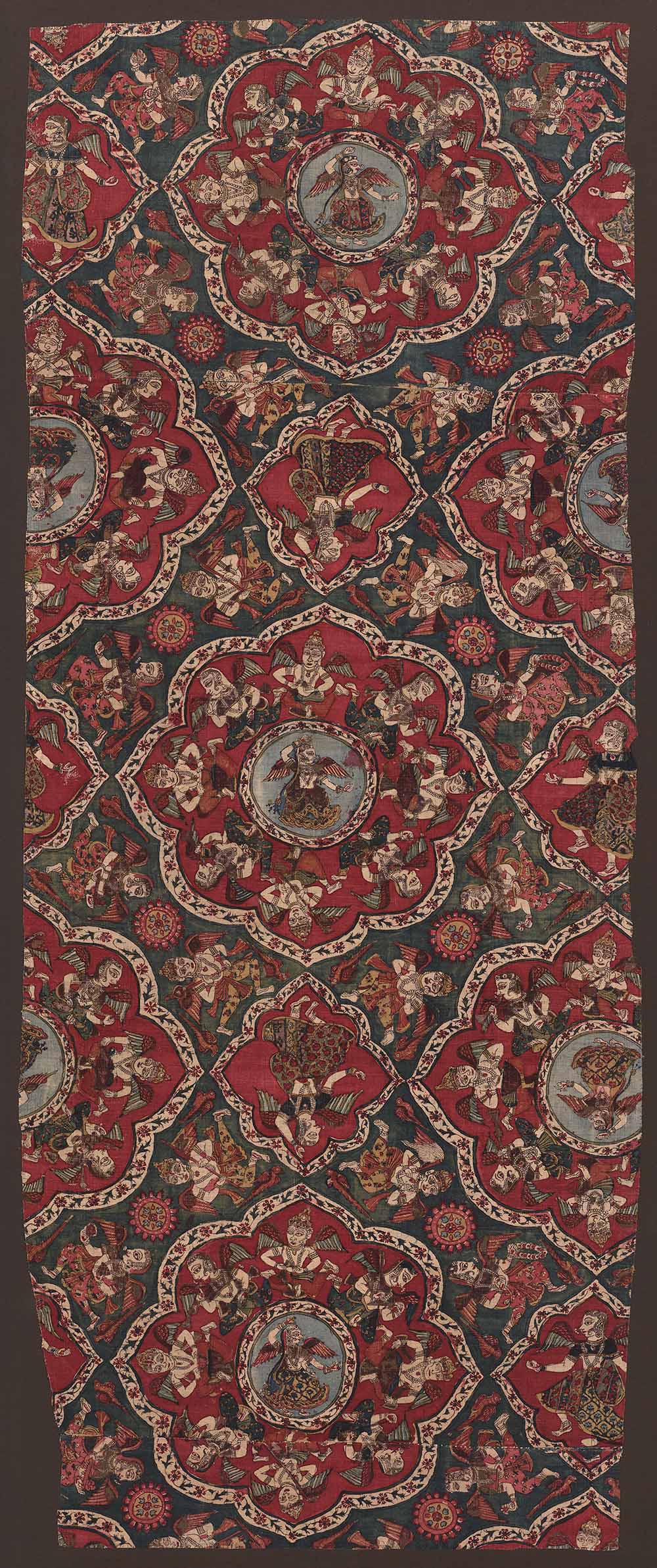
Fragment of a Canopy with Celestial Dancers and Musicians, circa 1800-1830, India; Andhra Pradesh, cotton, mordant, and resist-dyed, with painting, Asian Art Museum of San Francisco, Museum Purchase with additional funds from Betty N. Alberts and Alexander Johnson, 2011.2
Hello, my name is Ainsley Cameron. I am the curator of South Asian Art, Islamic Art and Antiquities at the Cincinnati Art Museum. I am the curator of Beyond Bollywood: 2000 Years of Dance in Art. I will be reading the Introduction for the exhibition.
Dance occupies a vital role in the religious and cultural practices of South Asia, Southeast Asia, and the Himalayan Region. Its force and meaning often convey profound messages beyond recognizable postures and categories of dance styles. Representations of dance have been created by artists over many centuries—historically in great sculptures and paintings, and in recent decades, in film and new media.
Within spiritual paths, the dance of, or for, the gods can provide religious and ethical lessons and can also symbolize power and majesty. Some Hindu and Buddhist deities dance, expressing their energies through rhythmic movements. Likewise, sacred dance by saints, minor deities, or devotees can conjure unseen realms, potentially disrupting or invigorating the world. In daily life, people have long danced for worship, for festivals, for the entertainment of emperors and princes, and for their own enjoyment. Rulers are depicted being honored or entertained by dancers or piously watching danced reenactments of sacred stories.
Through the representation of dance in artworks that date from the first to the 21st century, museum visitors are invited to consider the compelling visual language of dance through its many permutations and complexities. Beyond Bollywood: 2000 Years of Dance in Art demonstrates the exceptional power of dance in the visual arts, religious thought, literature, politics, and societal structures. And it explores how representations of dance convey joy and exuberance through patterned or free movement. Dance was—and is—not only for delight.
